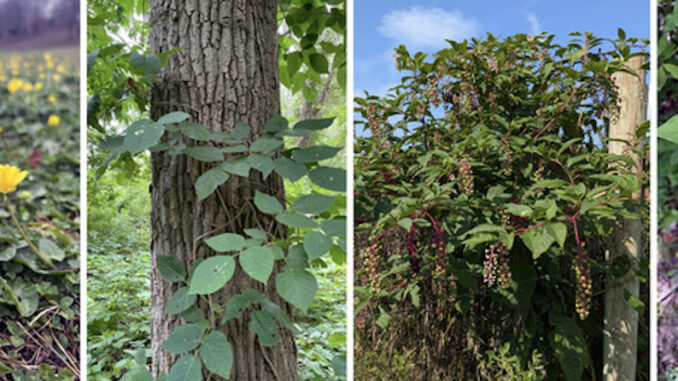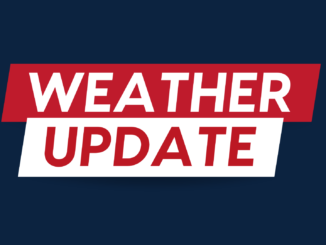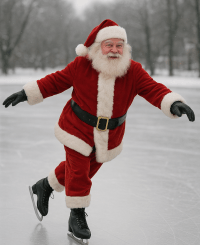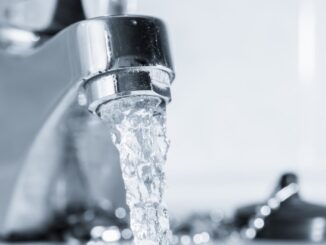
Courtesy N.C Forest Service
Invasive species is a term that often sparks debate. The meaning of ‘invasive’ can be subjective, which further muddies the water and often leads to misuse of the term. The U.S. Department of Agriculture (USDA) defines an invasive species as a nonnative species that, when introduced, causes or is likely to cause economic or environmental harm or harm to human health in the ecosystem under consideration.
Plants have an innate instinct to spread their seeds over a wide area to prevent seedling competition with the parent plant for resources like water, sunlight and nutrients. By spreading their seeds, plants increase the chances of their offspring surviving and thriving in diverse environments. Natural dispersal mechanisms, such as wind, water, animals and gravity, have played a significant role in plant evolution and native ranges. When seeds are dispersed naturally, plant species that emerge into a new ecosystem are often considered naturalized. When their spread is directly or indirectly linked to human actions, and their introduction harms the existing ecosystem, it’s labeled as invasive, or more aptly, a nonnative invasive.
Though native plant species like poison ivy and American pokeweed seem invasive as they aggressively encroach into our landscapes, they are considered aggressive spreaders rather than invasive species.
It’s important to note that not all introduced species become invasive. Many introduced species successfully integrate into new ecosystems without causing harm. It’s also worth noting that although native species like American pokeweed (Phytolacca americana), jewelweed (Impatiens capensis), purple passionflower (Passiflora incarnata) and poison ivy (Toxicodendron radicans) can seem invasive as they aggressively encroach into our landscapes, they are just that—aggressive spreaders, not an invasive species. These plants are part of the natural ecosystem and do not pose the same threats as nonnative invasive species. They are a part of our native forest systems and contribute to the overall biodiversity.
Nonnative invasive plants are typically fast growing, can reproduce rapidly and are able to tolerate a wide range of environmental conditions. Often, they are among the first to recolonize an area following a major disturbance like wildfire, major storms, flooding events and land use change.
Many have aggressive root systems that can spread long distances and outcompete surrounding vegetation while others produce chemicals in their leaves or root systems that can inhibit the growth of plants around them. Free from the natural competition of herbivores — insects and diseases that normally keep populations in check — nonnative invasive plants can outcompete native species, leading to a decline in biodiversity. Forests are complex systems of interacting organisms. Our understanding of the long-term consequences of nonnative invasive plants is still emerging. Still, it’s clear that they can change forest structure, degrade the beauty of our landscapes, disrupt food webs, harbor other invasive insects and pathogens and alter ecological processes such as fire regimes and nutrient cycling.
Increasing global trade and widespread use of nonnative plants for horticultural and landscaping purposes have contributed to the establishment of invasive plants and the challenges they present. Many of these nonnative plants, initially cultivated, have escaped and are now dominating the surrounding environment. According to the North Carolina Invasive Plant Council’s Invasive Plant List, there are more than 120 invasive plant species currently in North Carolina and more than 100 more on their watchlist. Many of these can be purchased from local and online garden centers.
The most effective way to combat nonnative invasive plants is through prevention. The N.C. Forest Service strongly urges folks to utilize native plants in your landscapes, gardens and forests, and to avoid planting species known to be invasive. Secondly, remove invasives when observed. Early detection and rapid response are crucial for controlling small infestations before they spread further. Controlling established nonnative invasive plants can be more challenging and may require persistent effort over multiple seasons. However, the benefits to our native forest systems and human well-being greatly outweigh the effort.
Contact your local NCFS office for assistance with the identification and specific recommendations for managing nonnative invasive plant species on your land. You can also join us during National Invasive Species Awareness Week (Feb. 24-28) for our annual Statewide Weed Out Campaign to reclaim our landscapes from nonnative invasive plants. More information on the Statewide Weed Out Campaign is coming soon.
See the Forest Health Program’s Invasive Plants page for more information on invasive plant identification and specifics on treatment recommendations. For resources on incorporating native plants on your land that meet your needs, visit:
North Carolina Extension Gardener Plant Toolbox
North Carolina Native Plant Society Native Plant List























